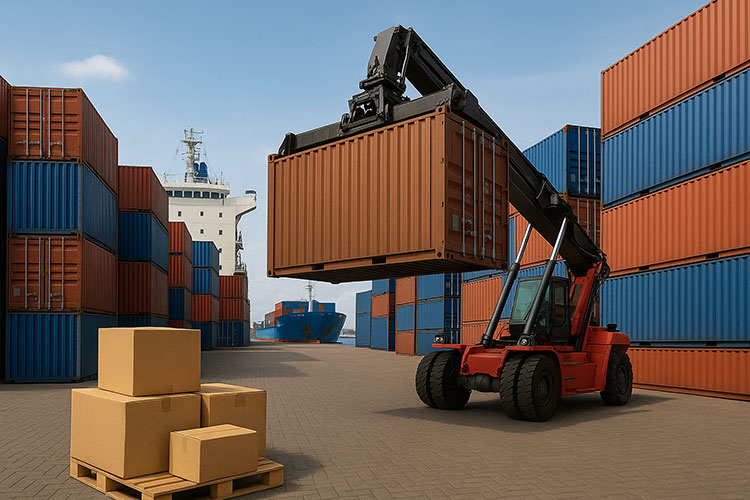Introduction
Legal importation of goods into Iran is a critical and sensitive process in international trade, involving specific steps from obtaining licenses to customs clearance. If these steps are not followed correctly, your shipment may be held at customs or you might face additional costs.
In this comprehensive guide, we outline every stage, required document, permit, and key tip so you can import goods into Iran smoothly and in full compliance with the law.
Step 1: Obtaining a Business (Commercial) Card
To begin any import activity, you must have a Business Card (Karte Bazargani). This is the official license for imports and exports, issued by the Iran Chamber of Commerce with approval from the Ministry of Industry, Mine and Trade (MIMT).
Requirements for a Business Card
Applicants must:
- Be over 23 years of age
- Hold at least a high school diploma
- Have no criminal record
- Possess a tax ID (Economic Code)
- Be registered in the tax system
Step 2: Registration in the Iran Comprehensive Trade System
Once you have your Business Card, you must register in the Iran Comprehensive Trade System (ntsw.ir), the official platform for placing orders and tracking the import process.
Required Information for Registration:
- Personal or company details
- Business Card number
- Economic code
- Details of the goods to be imported
Step 3: Determine Goods Category and Required Permits
According to Iranian law, goods fall into three categories:
- Permitted: Freely importable without special permits (e.g., stationery)
- Conditional: Require permits from relevant authorities (e.g., food products)
- Prohibited: Completely banned from import (e.g., firearms, alcohol)
Examples:
- Permitted: Basic clothing, small household appliances
- Conditional: Medical equipment, agricultural products
- Prohibited: Narcotics, goods against Islamic values
Step 4: Preparing Import Documents
Proforma Invoice
A preliminary document issued by the foreign seller before the official sale, containing product details, prices, payment, and shipping terms. It forms the basis for order registration in the trade system.
Commercial Invoice
Issued after final agreement between buyer and seller, detailing type of goods, quantity, final price, delivery, and payment terms. Required for customs clearance.
Packing List
An itemized list showing the contents of each package or container, including weight, dimensions, and quantity. Helps customs identify and evaluate the shipment.
Bill of Lading
A document issued by the shipping company acknowledging receipt of goods for transport. It serves as proof of shipment and ownership.
Certificate of Origin
Confirms the country where the goods were produced or processed. Usually issued by the Chamber of Commerce in the exporting country and used to calculate customs duties.
Cargo Insurance Policy
Covers the goods against risks during transport, such as damage, theft, or loss. A valid insurance policy prevents financial loss.
Inspection Certificate (if required)
Proves that the goods have been inspected for quality, quantity, and compliance with the order before shipment. Often mandatory for sensitive or conditional goods.
Step 5: Order Registration with MIMT
Order registration in the Comprehensive Trade System is the official declaration of intent to import goods to the Ministry of Industry, Mine and Trade.
Order Registration Process:
- Log into the Comprehensive Trade System
- Select the type and specifications of goods
- Choose the shipping method
- Upload documents and obtain approval
Step 6: Securing Foreign Currency for Imports
Without securing currency, importing is not possible. Main methods include:
- NIMA system (for official imports and priority goods)
- Licensed exchange offices (for goods not covered by NIMA)
- Export earnings (for exporters who also import goods)
Step 7: Shipping and Insurance
The shipping method depends on the type, volume, and cost of goods:
- Sea freight: Cheaper but slower
- Air freight: Faster but more expensive
- Land transport: Suitable for neighboring countries
💡 Cargo insurance is mandatory to protect against transport risks.
Step 8: Customs Clearance in Iran
When goods arrive at customs, a customs declaration must be filed.
Customs Clearance Process:
- File the declaration in the EPL customs system
- Goods are assessed (green, yellow, or red channel)
- Pay customs duties and taxes
- Receive the clearance permit
Step 9: Compliance with Regulations and Bans
Some goods are completely prohibited (e.g., narcotics, alcohol, spy equipment). Others require security agency permits before import.

FAQs
Can goods be imported without a Business Card?
No, a Business Card is mandatory for legal imports.
How much does customs clearance cost?
It varies based on the type and value of the goods and includes customs duties and taxes.
How long does customs clearance take?
If documents are complete, it typically takes 3–10 business days.
Conclusion
Legal importation of goods into Iran requires following specific steps and strictly observing customs regulations. By obtaining a Business Card, registering orders, securing currency, and preparing complete documentation, you can ensure smooth and lawful entry of your goods into the country.
For best results, consider working with professional trade consultants and customs brokers.
